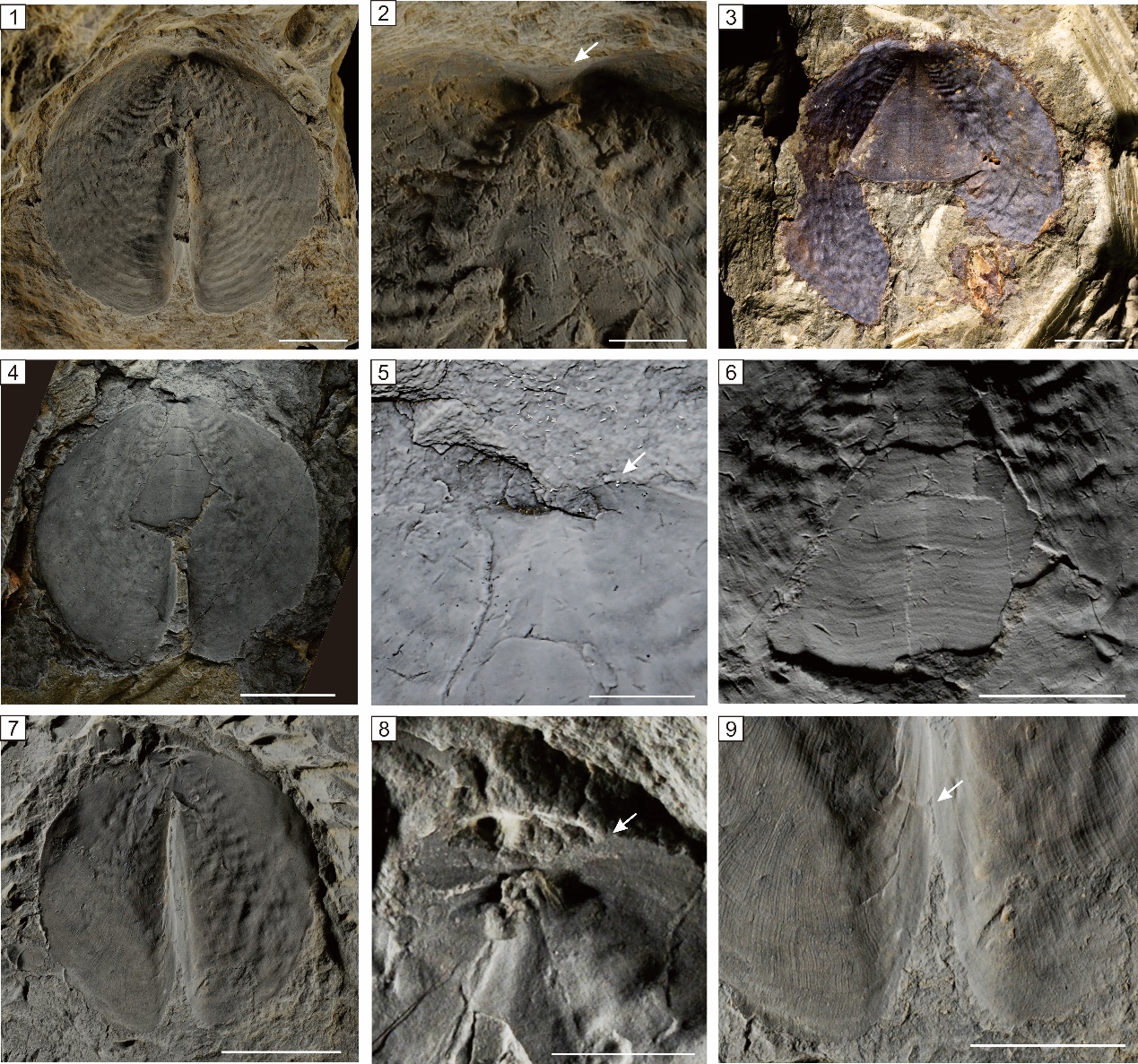Pterotheca Salter, 1853 is a morphologically highly unusual gastropod genus widely distributed in the Upper Ordovician and Llandovery Series (Lower Silurian) of North America and Europe. Its distinctive morphological features, including a bilaterally symmetrical shell shape, flattened shell, and a unique internal triangular septum, initially led to taxonomic confusion among early researchers, who misidentified it as a brachiopod, hyolith, pteropod, or cephalopod (operculum). Due to its highly specialized shell structure and striking morphology, which make it easily recognizable, the phylogenetic characteristics and paleoecological patterns of Pterotheca have long been a research focus in paleontology. However, as its fossil record has so far only been found in Europe and North America, with no reports from other regions, there remains controversy within the academic community regarding its paleogeographic distribution pattern.
Recently, Assistant Researcher Li Wenjie from the Nanjing Institute of Geology and Palaeontology, Chinese Academy of Sciences, collaborating with multiple team members, discovered Pterotheca fossils for the first time in the Xiushan Formation (mid-Telychian, Llandovery Epoch) of Yongshun County, Hunan Province, China. This discovery represents the first record of the genus in the low-latitude peri-Gondwanan region. Based on these new specimens from the South China Block, researchers identified two new species according to the morphological characteristics of the Pterotheca fossils: Pterotheca yongshunensis n. sp. and Pterotheca xiushanensis n. sp. The morphologic analysis suggests that close relatives of these new species may be Pterotheca species from the Telychian of Scotland. The new species show continuous variations of marginal apex to submarginal apex, implying that one of the Pterotheca species may be ancestral to the Devonian Aspidotheca Spriesterbach, 1919.
Sedimentological and paleoecological analyses suggest that the Pterotheca species from the Silurian of South China likely lived on soft silt-mud substrates, crawling slowly and feeding on algae and/or organic detritus within the sediment. They were adapted to shallow marine environments with substantial terrigenous input (Benthic Assemblage 2–3). Given that many localities yielding Silurian Pterotheca fossils (including South China and Spain) lack records of Ordovician Pterotheca, and considering that all known Silurian Pterotheca fossils occur in fine-grained siliciclastic rocks, with most sedimentary features representing periods of sea-level fall and lowstand, it is hypothesized that geographic isolation and enhanced oceanic circulation during the global sea-level fall in the early Silurian promoted speciation of Pterotheca in different regions worldwide. Conversely, the connection of sea routes during the Rhuddanian transgression following the end-Ordovician glaciation may have facilitated the initial dispersal of Silurian Pterotheca.
The research findings were recently published in the international paleontological journal Journal of Paleontology. The related research received support from Ministry of Science and Technology and National Natural Science Foundation of China. This study is a contribution to IGCP project 735 “Rocks and the rise of Ordovician life”.
Reference: Li, W.J.*, Fang, X., Song, J., Zhang, Y.D., 2024. Pterotheca (Gastropoda) from the Telychian (Silurian) Xiushan Formation of South China: taxonomy, paleoecology, and paleogeography. Journal of Paleontology 98, 981–995. https://doi.org/10.1017/jpa.2024.49.

Pterotheca yongshunensis n. sp. from the Xiushan Formation

Pterotheca xiushanensis n. sp. from the Xiushan Formation
Download:
